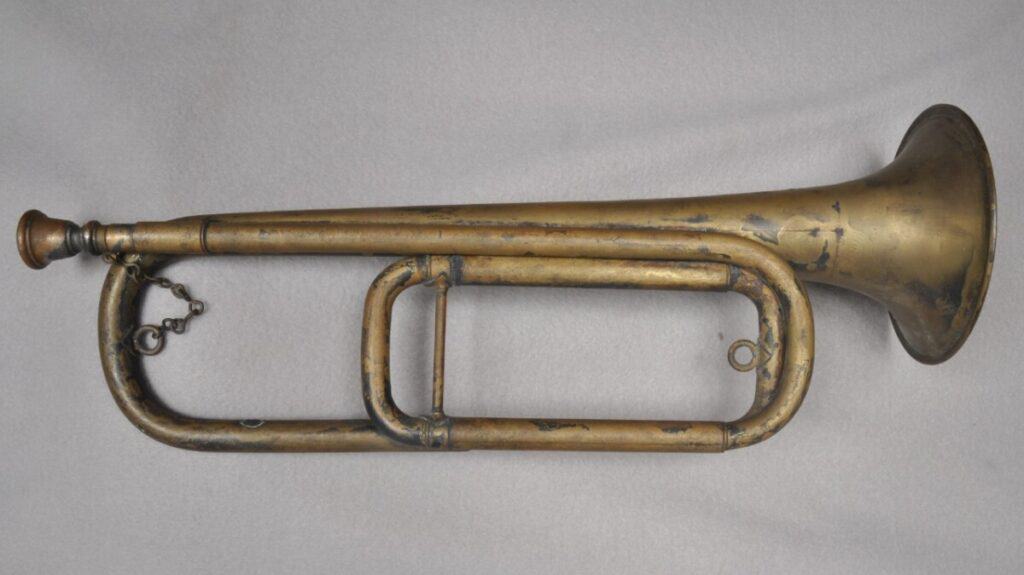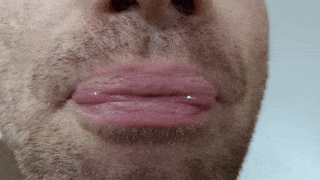This post contains affiliate links. We earn commissions if you purchase products from retailers after clicking on a link from our site. As an Amazon Associate, we earn from qualifying purchases.
The bugle is one of the most simple instruments that you’ll probably see. A standard bugle has no buttons, no gadgets–just a coil of brass pipe with maybe a tuning slide. Does this mean it’s easy to play?
Although the bugle is very limited in the notes it can play it is still a difficult instrument to play well due to the brass embouchure requirements.
What on earth is an embouchure? Glad you asked! I’ll dive in and explain why the bugle is a much harder instrument than it looks.
The Difficult Instrument In Disguise: The Bugle
If you know how to play trumpet and you can play high C–you are done! The bugle will feel slightly different to play because of differences in backpressure etc., but if you can play trumpet, you can play bugle without any issue.

By the way, looking for recording equipment and musical instruments? Check out Sweetwater.com for microphones, monitors, audio interface or any other recording gear that you could ever need. (Affiliate Link)
If you don’t play trumpet… Well, you might be in for a surprise.
You might be thinking… how can the bugle be hard to play? A trumpet has 3 buttons, and the bugle has no buttons–how can it get any easier?
The reason is that the sound is not coming from the bugle, it’s coming from the bugle player’s lips (I’ll just say bugler for the rest of this post because it sounds kind of cool).
That’s right, the music of the bugle is coming from the buzzing of the lips. How fast does this need to happen?

A bugle player will have to buzz their lips at a speed of over 1000 revolutions per second (to play the top notes).
That’s fast. Not only do you have to buzz your lips very quickly, but you have to have good form with proper breathing. Many people can make the sound of an elephant blaring, but this isn’t the sound you want to play the trumpet. You need to have a good embouchure.
What Is An Embouchure?
The word embouchure simply means the shape and tension of your mouth. Or in other words, the set-up of your face and lips in combination with the mouthpiece of the instrument.
All wind instruments require a certain type of embouchure–and some are more complex than others. For example, the embouchure required for a tin whistle (a type of fipple flute, which is similar to the recorder, read more here at our post talking about both of those instruments) is much less complicated than the saxophone embouchure.
For bugle and trumpet players, a specific embouchure is required. The brass embouchure is particularly challenging and demanding when compared to other embouchures, and even more so with the trumpet and the bugle since they require a much faster speed of buzzing than other types of brass instruments.
The difficulty of the bugle embouchure is in the fact that the player has to buzz the notes themselves. With other wind instrument embouchures the player blows and something else vibrates to make the sound–with the trumpet the player themselves has to make the sound.
The bugle embouchure requires the lips to be firm on the edges of the mouth and loose in the center. The animated video I show above gives an example of the uneven set up of the embouchure.
The lips should not be pulled back but should have enough substance on them to not stretch out the lips too much. Furthermore, the cheeks and tongue all work together to focus the sound to increase wind speed.
Whoever said that the bugle is easy wasn’t all correct.
Yes, when compared to other wind instruments and especially the trumpet the bugle is definitely easier to play. However, this doesn’t mean that a random person who has never played it before can play it well enough to make a beautiful sound.
It takes months of practice to be able to get the embouchure right. I played the trumpet through high school and in a couple community bands and I recently spent a month trying to get back into the swing of things and resurrect my embouchure.
I learned a month is not enough time to form a good embouchure. It takes several months of consistent positive practice.
How Long Does It Take To Play the Bugle?
Great question!
If you practice the bugle every day and don’t over practice, you can learn to play 10 or more songs on the bugle in 3 months time.
What do I mean by over practice? Well, I unfortunately learned about this the hard way. When I was practicing the trumpet for a month, I practiced for an hour a day. This is a reasonable amount of time to practice the trumpet if you’ve been playing the trumpet consistently for 6 months. But for a new student, 60 minutes in one sitting is too long.
The reason is that your lips tire out extremely quickly early on–and it’s important to not practice when your lips are tired. If you feel pain or any aching or exhaustion, it’s time to stop. Practicing past this point is the number one reason why people use too much pressure when practicing brass instruments which can hurt themselves.
Also, if you want to learn the bugle, I recommend learning the trumpet.
Why do I say that? The trumpet can play all the notes the bugle can, and more. If you learn songs on the trumpet, chances are when you come to the bugle you’re going to have a massive advantage of all the coordination you learned on the trumpet. Also, if you have a bugle, you don’t actually need a trumpet.
What Are The Differences Between a Bugle And the Trumpet?
It turns out the bugle and trumpet are very similar (read more about the differences between the trumpet and the bugle in my post here if you want to see how different).
Both instruments are essentially coiled pipe with a mouthpiece and a bell on opposite ends of the pipe. The trumpet has 3 valves in the center of the instrument that change the length of the pipe, while the bugle typically does not.
The trumpet is used for music, symphony, jazz, and pop music, while the bugle is usually reserved for ceremonies and rituals (especially in relation to the military).
Do You Need a Bugle If You Have a Trumpet?
Here’s a cool trick: You can play all the notes of the bugle in the same way a bugle works if you don’t press any keys of the trumpet down.
When you don’t press the keys of the trumpet, you keep the length of the pipe the same. So, you essentially have the bugle where the length of the pipe is fixed (no valve keys).
So, to be super clear–a B flat bugle (B flat just means what the notes are tuned to) plays the following notes:
C4, G4, C5, E5, G5, C6
A trumpet, when you don’t press the valves down can play these notes:
C4, G4, C5, E5, G5 and C6.
So, in short, if you have a trumpet, you don’t need to buy a bugle since the trumpet can play the same notes in a similar tone. Although bugles and trumpets sound slightly different from each other the sound is close enough to be interchangeable.
